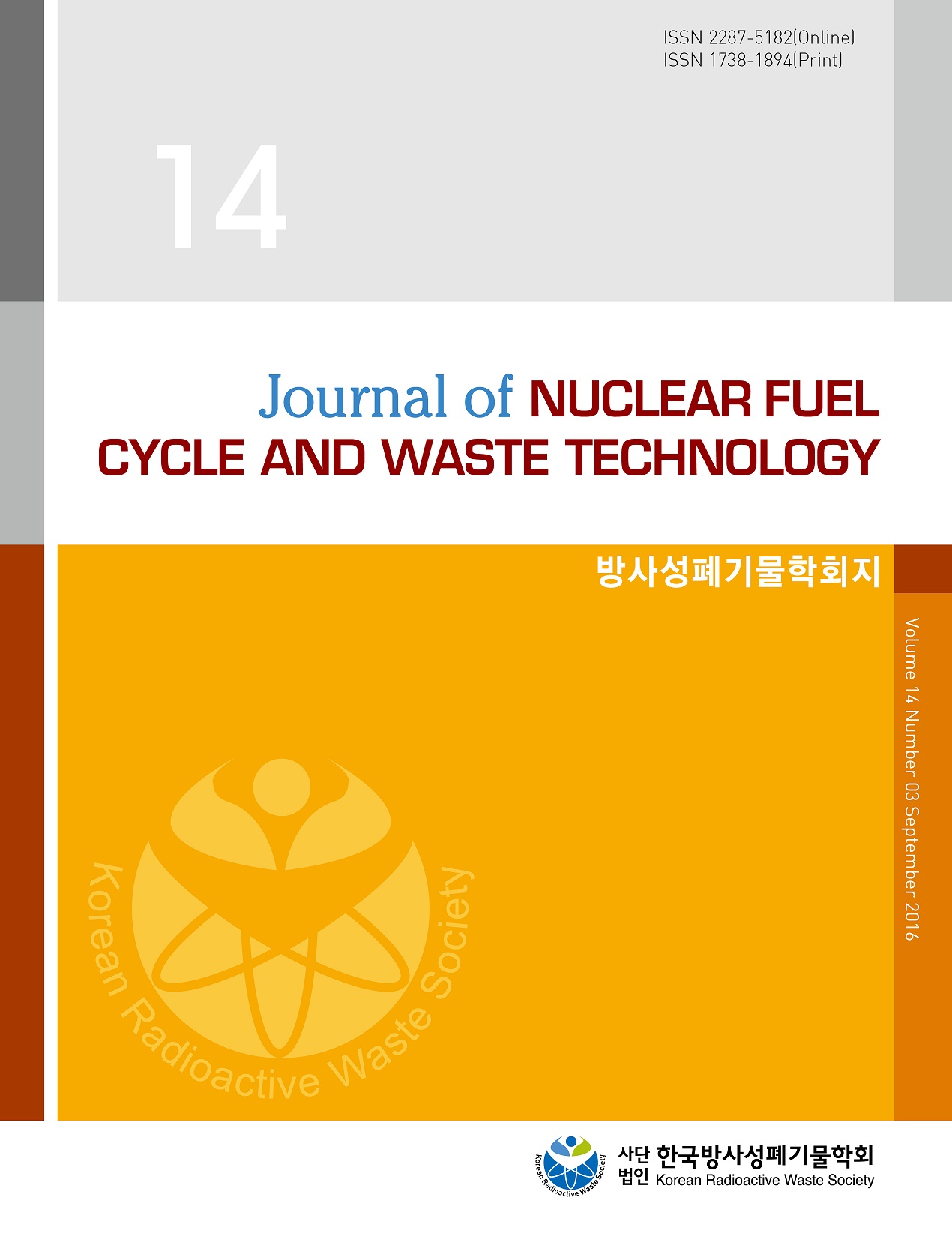학술논문
U.S. Policy and Current Practices for Blending Low-Level Radioactive Waste for Disposal
이용수 0
- 영문명
- 저준위 방사성폐기물의 혼합 관련 미국의 정책과 실제 적용
- 발행기관
- 한국방사성폐기물학회
- 저자명
- David S. Kessel 김창락
- 간행물 정보
- 『Journal of Nuclear Fuel Cycle and Waste Technology (JNFCWT)』Vol.14 No.3, 235~243쪽, 전체 9쪽
- 주제분류
- 공학 > 공학일반
- 파일형태
- 발행일자
- 2016.09.30

국문 초록
In the near future, many countries, including the Republic of Korea, will face a significant increase in low level radioactive waste (LLW) from nuclear power plant decommissioning. The purpose of this paper is to look at blending as a method for enhancing disposal options for low-level radioactive waste from the decommissioning of nuclear reactors. The 2007 U.S.
Nuclear Regulatory Commission strategic assessment of the status of the U.S. LLW program identified the need to move to a risk-informed and performance-based regulatory approach for managing LLW. The strategic assessment identified blending waste of varying radionuclide concentrations as a potential means of enhancing options for LLW disposal. The NRC’s position is that concentration averaging or blending can be performed in a way that does not diminish the overall safety of LLW disposal. The revised regulatory requirements for blending LLW are presented in the revised NRC Branch Technical Position for Concentration Averaging and Encapsulation (CA BTP 2015). The changes to the CA BTP that are the most significant for NPP operation, maintenance and decommissioning are reviewed in this paper and a potential application is identified for decommissioning waste in Korea. By far the largest volume of LLW from NPPs will come from decommissioning rather than operation. The large volumes in decommissioning present an opportunity for significant gains in disposal efficiency from blending and concentration averaging. The application of concentration averaging waste from a reactor bio-shield is also presented.
영문 초록
우리나라를 포함한 많은 국가들에서 향후 원전 해체로 저준위폐기물이 대량으로 발생할 전망이다. 본 논문에서는 미국의저준위방사성폐기물 처분 관련 규제 기준을 분석하고, 특히 원자력발전소의 운영 및 해체를 포함하는 전주기에서 발생하는 폐기물의 처분 옵션을 확장하는 방안으로 사용되고 있는 저준위방사성폐기물의 블랜딩에 대해 검토하였다. 2007년 미국 NRC는 미국 저준위폐기물 관리 프로그램에 대한 전략분석 결과, 방사선위험도와 성능평가에 기반한 새로운 저준위폐기물 관리 규제의 필요성을 제기하였는데, 특히 방사성핵종 농도가 다른 폐기물의 블랜딩을 처분에 대한 옵션을 다양화할 수있는 안전한 방안으로 제시하였다. NRC는 블랜딩을 처분에 적합하도록 방사성핵종의 농도가 다른 저준위폐기물을 비교적균일하게 혼합(mixing)하는 것으로 정의하였다. 2015년 2월 농도 평균과 포장에 대한 NRC BTP의 개정판으로 공표된 블랜딩에 대한 구체적인 기술요건을 분석하였고 국내 해체폐기물에 대한 적용 방안도 예시하였다. 대량으로 발생할 해체폐기물에 대해 블랜딩과 농도평균을 적용하면 처분 효율성을 향상시킬 수 있다. 바이오쉴드 콘크리트에 대한 농도평균 적용에 대해 예시하였다.
목차
키워드
해당간행물 수록 논문
참고문헌
최근 이용한 논문
교보eBook 첫 방문을 환영 합니다!

신규가입 혜택 지급이 완료 되었습니다.
바로 사용 가능한 교보e캐시 1,000원 (유효기간 7일)
지금 바로 교보eBook의 다양한 콘텐츠를 이용해 보세요!



